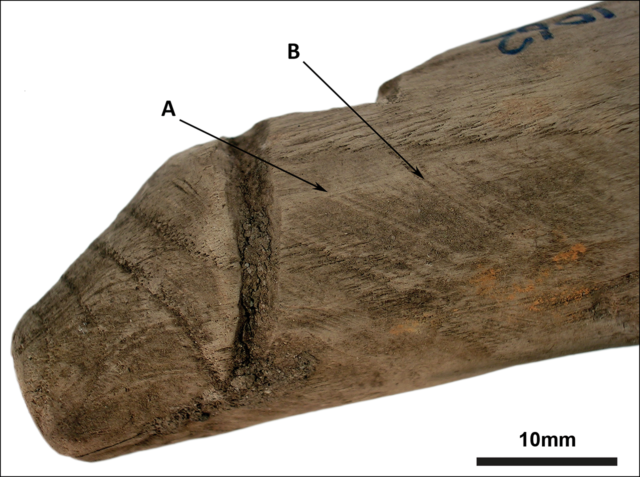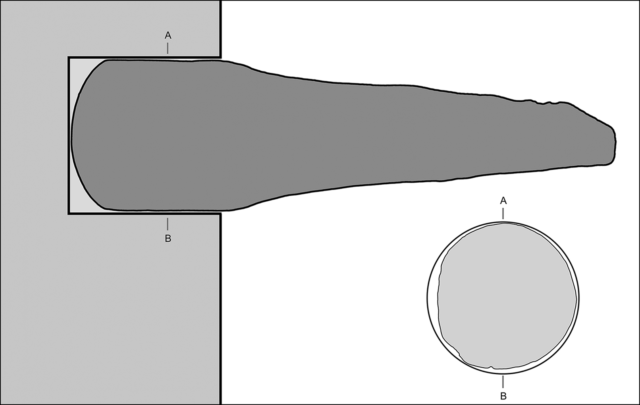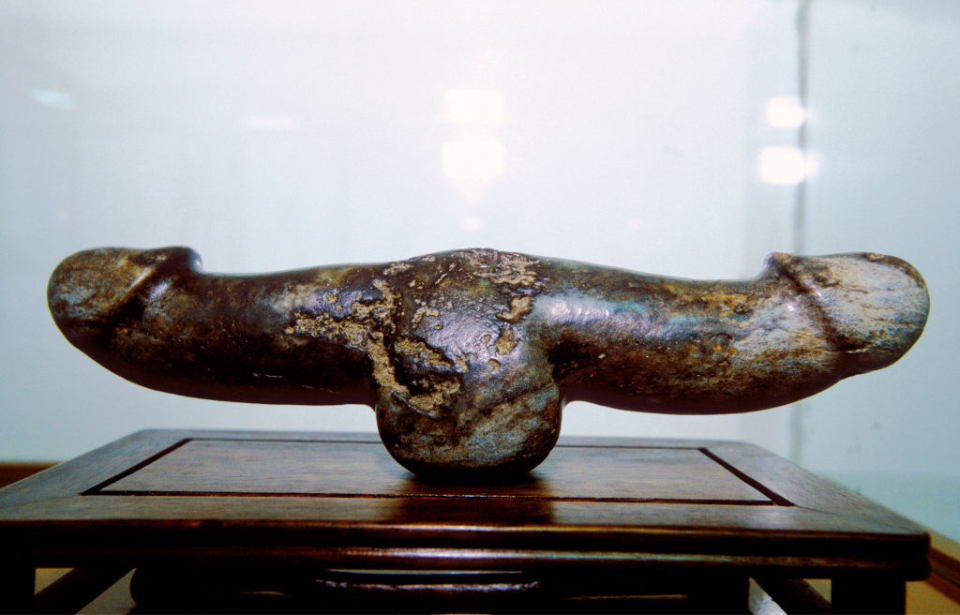People of the past really weren’t that different from those of the present, and that includes their more intimate affairs. Researchers have recently gone back to re-assess an old discovery found near Hadrian’s Wall and determined that the item had actually been drastically incorrectly classified. It was a piece of wood carved in the likeness of a phallus – meaning it might be the oldest known Roman sex toy.
Discovered at Vindolanda
Rob Collins (Newcastle University) and Rob Sands (University College Dublin), both professors of archaeology, were fascinated by a wooden artifact preserved in the ideal soil conditions at Vindolanda, a famous Roman fort in the United Kingdom. The object was originally discovered there in 1992 as one of many items – shoes, leather scraps, and dress accessories – found in a ditch, and believed to be a tool used for darning.

Sands was looking through some of the wooden objects from the dig. When he came across the alleged darning tool he said, according to fellow researcher Collins, “ah yes, this is a dick.” Collins agreed with his colleague, telling The Guardian, “I have to confess, part of me thinks it’s kind of self-evident that it is a penis. I don’t know who entered it into the catalogue. Maybe it was somebody uncomfortable with it or didn’t think the Romans would do such silly things.”
Re-evaluating its use
Their recent investigation focused on showing that the piece of wood was, as Sands so eloquently expressed upon discovery, actually carved to look like a phallus and potentially serve the function of one. This makes the discovery the, “first known example of a non-miniaturized disembodied phallus made of wood in the Roman world.”
Researchers have known for a long time, however, that these were common implements in the Roman empire, as they were frequently painted in mosaics and frescoes, or used as decorations on pottery. Collins and Sands wanted to do more than just address the object’s shape; they wanted to figure out what it was used for.

Although they were unable to come to a single conclusive answer, they were able to break it down into three potential categories. The most evident of these was as a sex toy, although both scholars are quick to note that this doesn’t exclude its use in torture or non-consensual scenarios as well. Although it is certainly likely that the object was used as a dildo, the main thing getting in the way of confirming it is that there simply haven’t been any others to compare it to.
Most than just a dildo
Although this phallus is undoubtedly made in the likeness of a certain appendage, it wasn’t necessarily made for pleasure. In fact, there are many instances where objects of this kind were used in other ways, including as a tool for mashing or grinding materials together. Obviously, this could have been accomplished by something non-penis shaped, but it is believed that this particular design helped to add more strength or protection to the mixture.

The investigation of this particular Roman rod, however, has shown that both ends were much smoother than the wood in the middle, likely from repeated contact with natural skin oils. This indicates to researchers that the item was likely inserted into a socket in an object and used as a good luck charm that could be touched by people walking past it. This was an extremely common practice at the time as these phalluses were supposedly powerful symbols against evil.
More from us: Napoleon’s Amputated Member Has Had a Bizarre Afterlife
The phallus, whether it was used for grinding herbs, for good luck, or something more exciting, is still on display for all to see at the Vindolanda museum.
